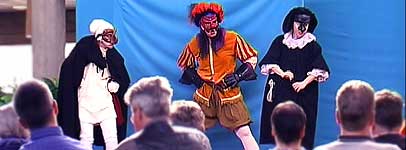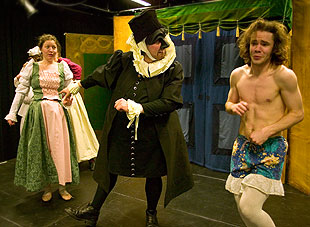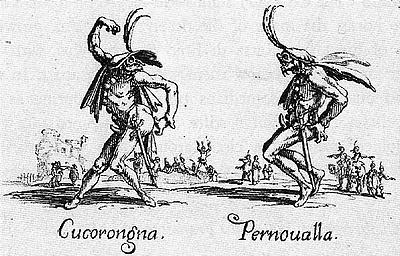It is interesting to read how many maestros define exactly what Commedia dell’Arte is and what is not, or how students and scholars want dogmatic truths about what Commedia dell’Arte, when we really know so little about it from its heyday.
When we talk about Commedia dell’Arte we actually talk about a lot of different genres. The do have a lot in common, the masks, the plots, the very physical acting, the roots from festive rituals and Vulgar Comedy and so on. But there is much more that differs.
It is a little like if someone in about 500 years would try to find out about modern tragedy by comparing a postmodern play from today to an early French melodrama.
As I see it the reasons we don’t know very much is three:
- Time – The heyday of Commedia dell’Arte lasted for approximately 200 years, and that was in a time of changes in Europe. Off course Commedia dell’Arte followed its time. The proof is that is survived.
As the European urban society becomes more domestic, flexible and intolerant, we can see how Commedia dell’Arte goes from a much more crude, violent, sexual, direct, forthcoming form and move in to a refined, soft, prude, delicate, private, sphere. Pantalone goes from being the potent, horny, dangerous Magnifico to a grumpy, but goodhearted old man, the Servetta goes from a street smart, harsh whore to a witty, clever chambermaid, the plots move indoors from the street or the plaza wish makes the acting ales physical and so on. - Place – Commedia dell’Arte was (or is) not first and foremost an Italian concern. From the beginning it was played all over Europe, from England to Russia, from Spain to Denmark. As a matter of fact it might be just because the French king, Henry II, traveled through Venice in the middle of the sixteenth century that we know about Commedia dell’Arte on the whole.
Since the troupes were touring companies they had makes changes in the show depending on the rules and taste of county they were playing in. Sometimes they couldn’t even speak the language.
Not only that, the troupes got different roles in different countries. In Spain for example the actors got much more involved in, and influenced, the Spanish comedy tradition, while they become established as an early institution in Paris. - Social context – While Shakespeare is famous for playing for all classes at the same time, Commedia dell’Arte did the same, but not at the same time. As touring companies they could play in the street during the day just to play at a dinner in the castle at night.
This might also be one of the reasons Commedia dell’Arte never scripted their plays. They had to be flexible in order to suit the audiences they were playing for at each specific the time. We can assume that the taste and understanding of the plays differed according to the social context they were played in and the actors had to adapt.
Besides that the only real written material we have on Commedia dell’Arte if from what was played in the courts around Italy and Europe wish also makes it hard to really know what happened on the stages in the streets and marketplaces or in the hired stazes. The only knowledge we have (except pictures, masks and such) from the less fortunate troupes comes from the church and their priests and bishops talking about how obscene the actors and their lives are, in order to ban the troupes from the streets.



Pingback: A tribute to life - Commedia dell'Arte & Vulgar Comedy %Commedia dell'Arte & Vulgar Comedy